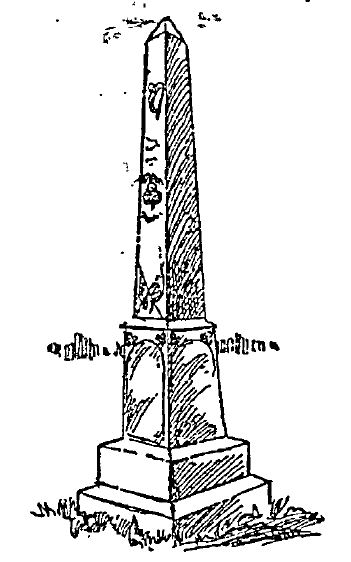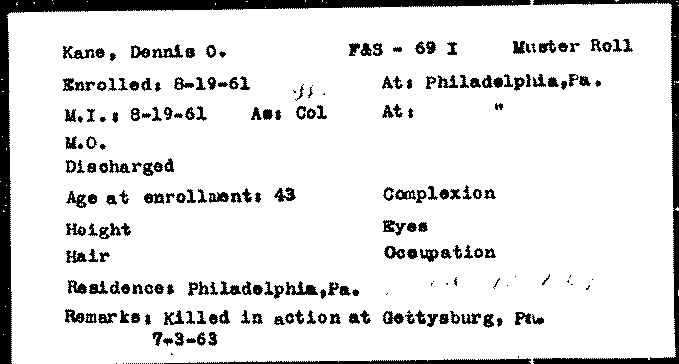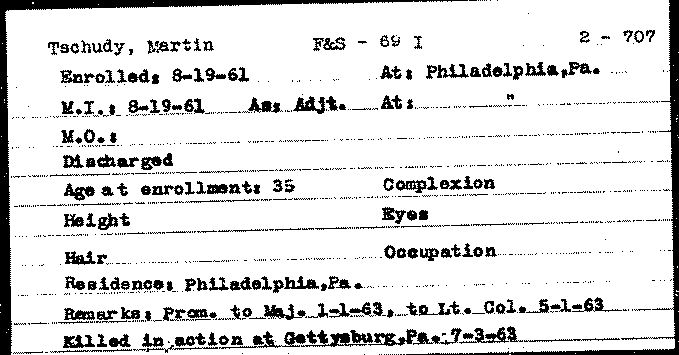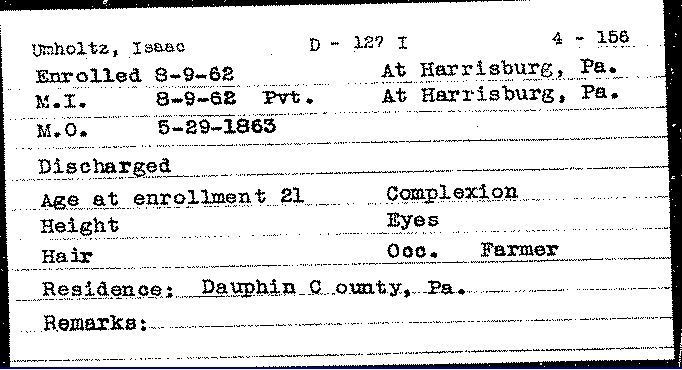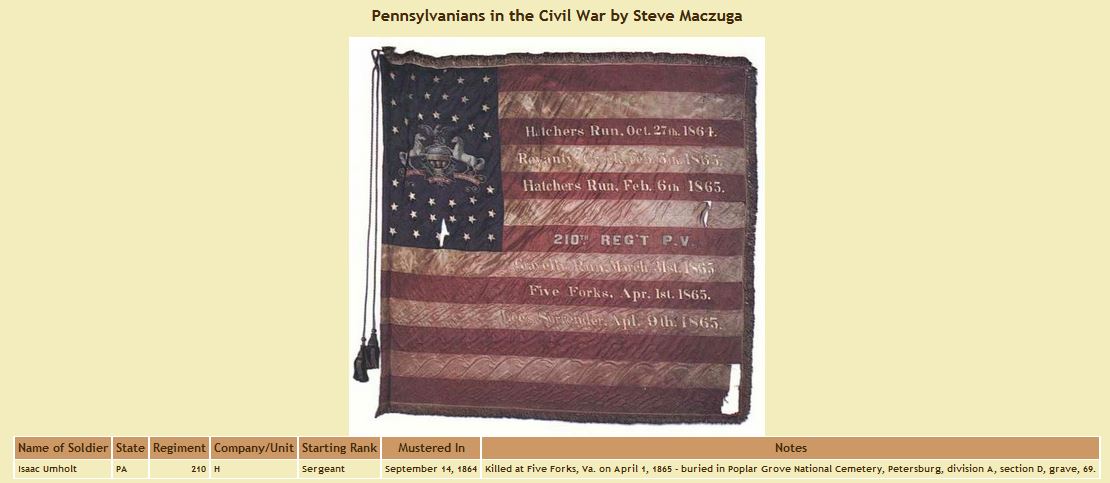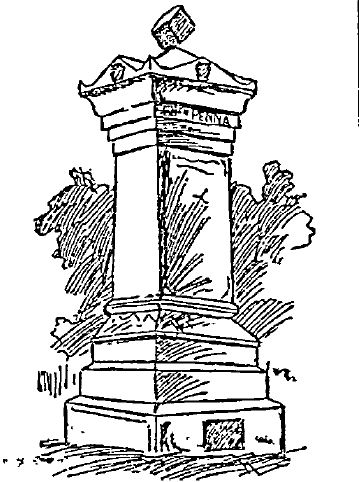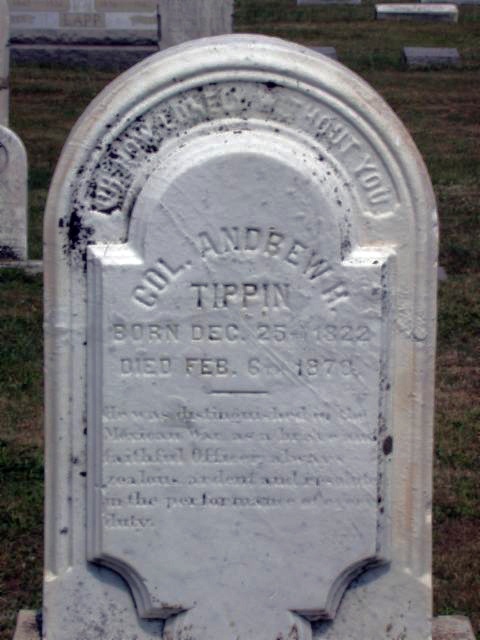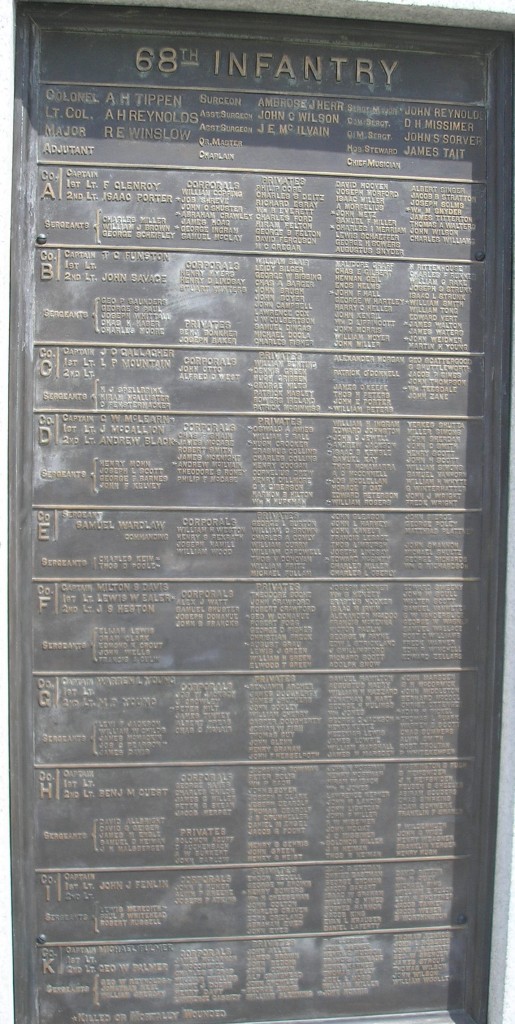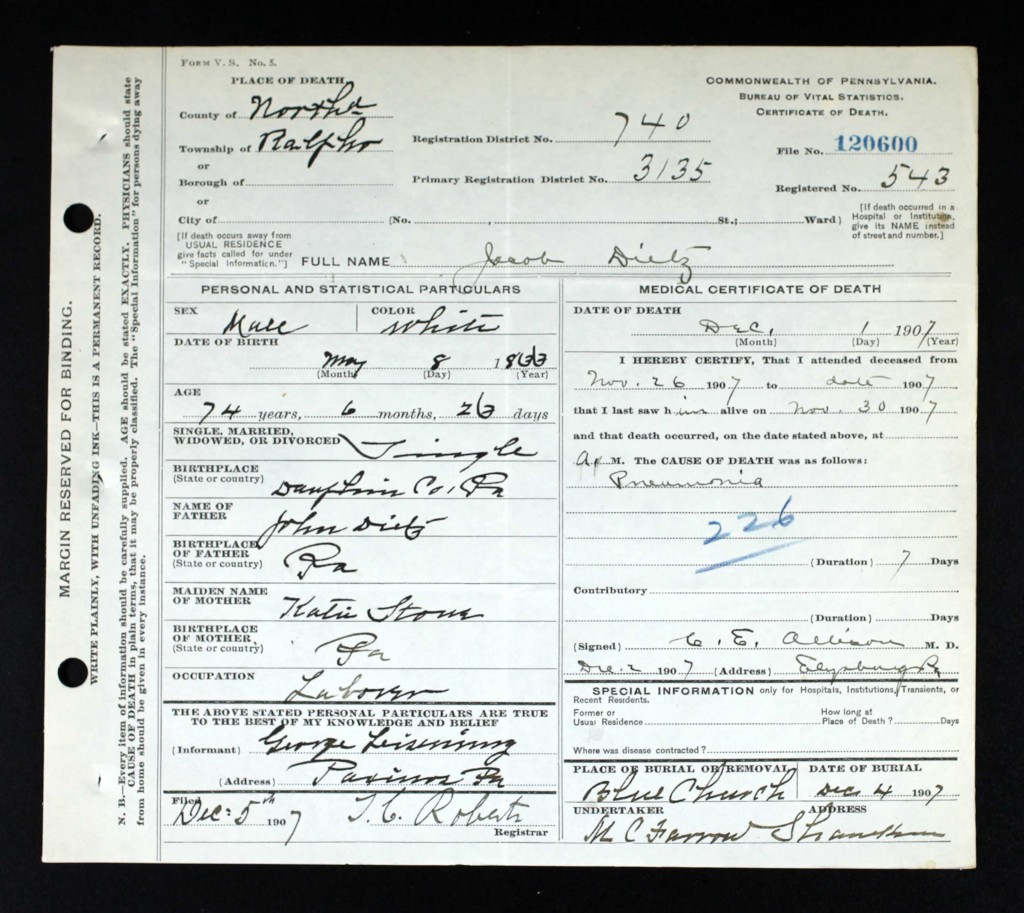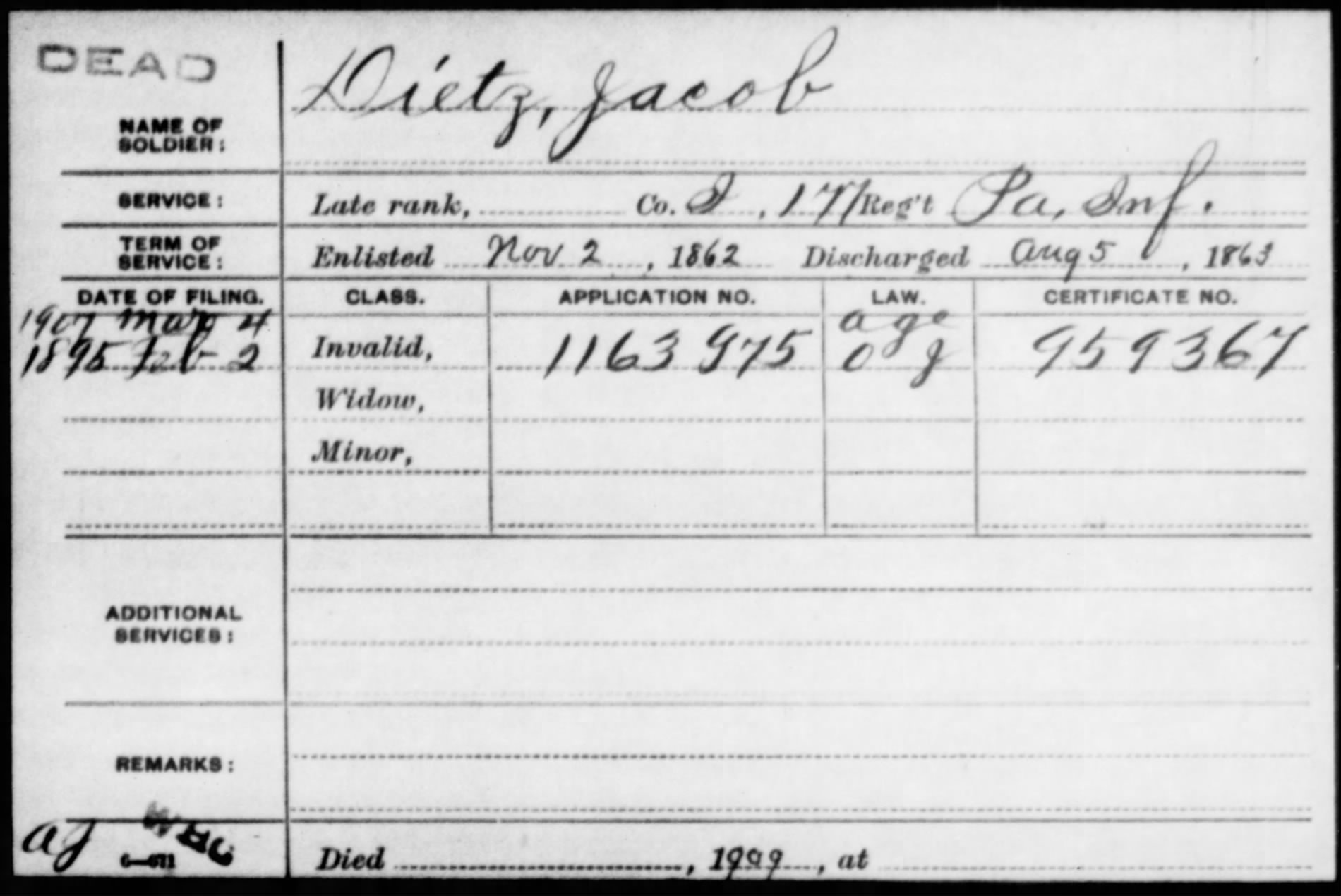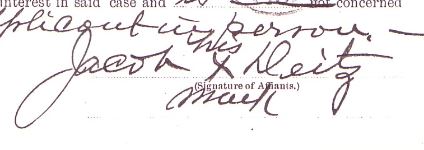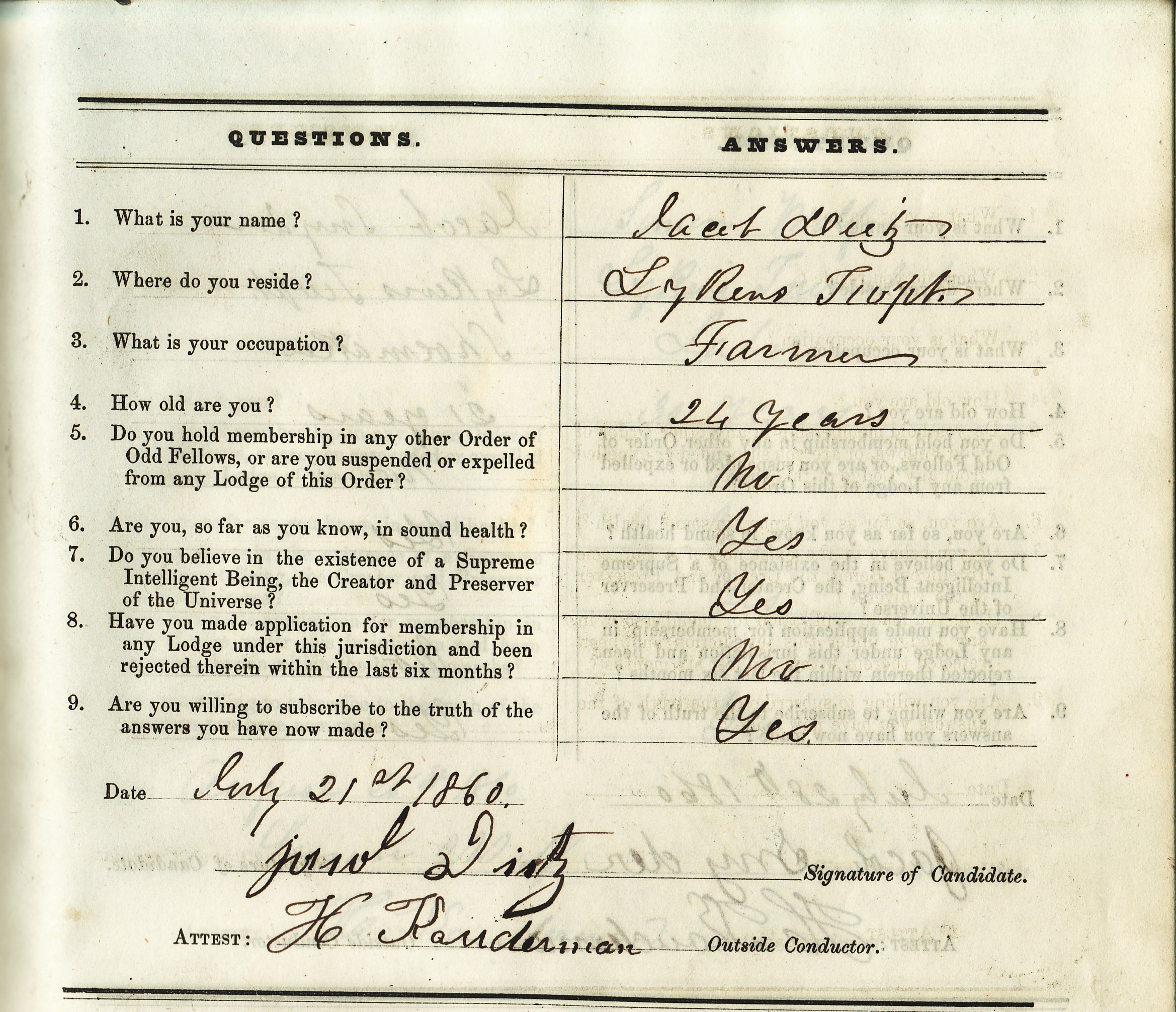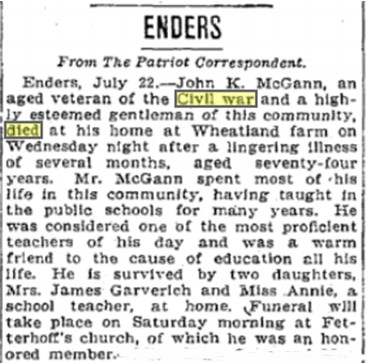Monuments at Gettysburg – 69th Pennsylvania Infantry
Posted By Norman Gasbarro on November 27, 2014
The 69th Pennsylvania Infantry Monument at Gettysburg is located south of the town of Gettysburg, close to the Copse of Trees. It was dedicated in 1887 by the Commonwealth of Pennsylvania. The drawing of the monument (above) is from the Philadelphia Inquirer article describing the regimental histories and ceremonies that took place in 1889. For a picture of the monument, see Steven Recker’s Virtual Gettysburg Web Site which has more information about the monument and the 69th Pennsylvania Infantry.
A full description of the monument, its GPS coordinates, a photograph, and some of the history of the 69th Pennsylvania Infantry can be found on the Stone Sentinels Web Site.
—————————–
On 11 September 1889, the Philadelphia Inquirer included the following information on the 69th Pennsylvania Infantry in its article on the monument dedications:
“Hold This Road at All Hazards.”
Colonel Joshua T. Owen commanded the 69th both in the three months’ and three years’ service. It contained mostly Irishmen of Philadelphia, robust, hardy, courageous. It was this command that successfully carried out Hooker’s orders at White Oak Swamp- “Hold this position at all hazards!” – making “the first successful bayonet charge of the war,” with a loss of seven killed, twenty-two wounded, five taken prisoners. The regiment, officered by Colonel O’Kane, Lieutenant Colonel Deveraux and Major Martin Tschudy, rose from the stone wall on Cemetery Ridge on the second day at Gettysburg and repulsed the enemy’s attack upon the 63rd Rhode Island Battery with deadly effect. Every attack for two hours was received with a bloody repulse. On the 3rd day they received the final desperate attack and threw the enemy’s splendid lines into confusion. Though the right was finally forced back to the trees and left and centre held the position unflinchingly before the most fearful attack of the war. Here both Colonel O’Kane and Lieutenant [Colonel] Tschudy were killed. The Lieutenant had been wounded the day before. Major Duffy taking command, though wounded, fought on till victory was won.
The comrades and friends will assemble at the Washington House at 10 o’clock A.M., and proceed in a body to Cemetery Ridge, where their monument stands on the field where Pickett’s Charge was repulsed. Services will commence with prayer by Rev. Joseph A. Boll, orations by Colonel James O’Reilly and captain John E. Reilly.
—————————–
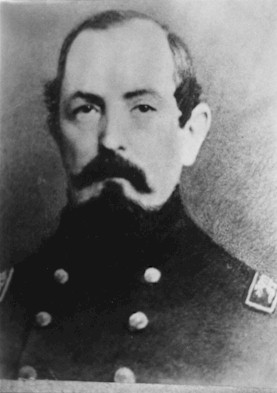
Dennis O’Kane (1818-1863)
Dennis O’Kane was the commander of the 69th Pennsylvania Infantry at Gettysburg. He joined the regiment as its Colonel on 19 August 1861. At the time he was 43 years old and resided in Philadelphia. No other personal information about him is available on the Pennsylvania Veterans’ File Card (below) available from the Pennsylvania Archives.
On 3 July 1863, Colonel O’Kane was mortally wounded during Pickett’s Charge. He is buried at Old Cathedral Cemetery, Philadelphia. For further information about him, see his FindagraveMemorial.
—————————–
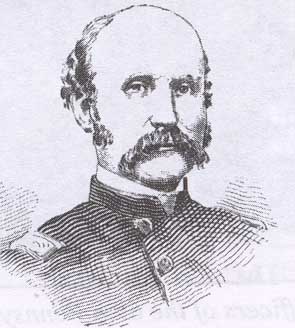
Martin Tschudy (18xx-xxxx)
Martin Tschudy took over command of the regiment after Dennis O’Kane was mortally wounded. He was a Philadelphian at the time of the Civil War but was born about 1818 in Charleston, South Carolina. There is no other personal information about him available on the Pennsylvania Veterans’ File Card (below) from the Pennsylvania Archives. His promotion to Major came on 1 January 1863. On 1 May 1863, he was promoted to Lieutenant Colonel, the rank he held at the time of the Battle of Gettysburg.
The same fate befell Lieutenant Colonel Tschudy as did Colonel O’Kane. He was mortally wounded on 3 July 1863. More information about him can be found at his FindagraveMemorial.
——————————-
Around the base of the Pennsylvania Memorial at Gettysburg are a series of plaques which, by regiment and company, note the names of every soldier who was present at the Battle of Gettysburg. The plaque for the 69th Pennsylvania Infantry is pictured below. By clicking on the plaque it should enlarge so the names can be more clearly read. If a name does not appear, it could be that the soldier did serve in the 69th Pennsylvania Infantry, but was not part of the regiment during its days in Gettysburg. There could also be errors on the plaque.
—————————–
The news clippings are from the on-line resources of the Free Library of Philadelphia.
 ;
;
